Pickleball court vs tennis court: A Detailed Comparison
The debate over whether pickleball is taking the spotlight away from tennis is gaining momentum as pickleball’s popularity surges across the United States. Both sports offer unique characteristics that appeal to different types of players. Whether you seek a leisurely social activity or a highly competitive sport, understanding the fundamental differences between pickleball court vs tennis court can guide you in choosing the right playing space. This detailed comparison dives into the nuances of court dimensions, surface types, net specifications, and much more, helping you make an informed decision.
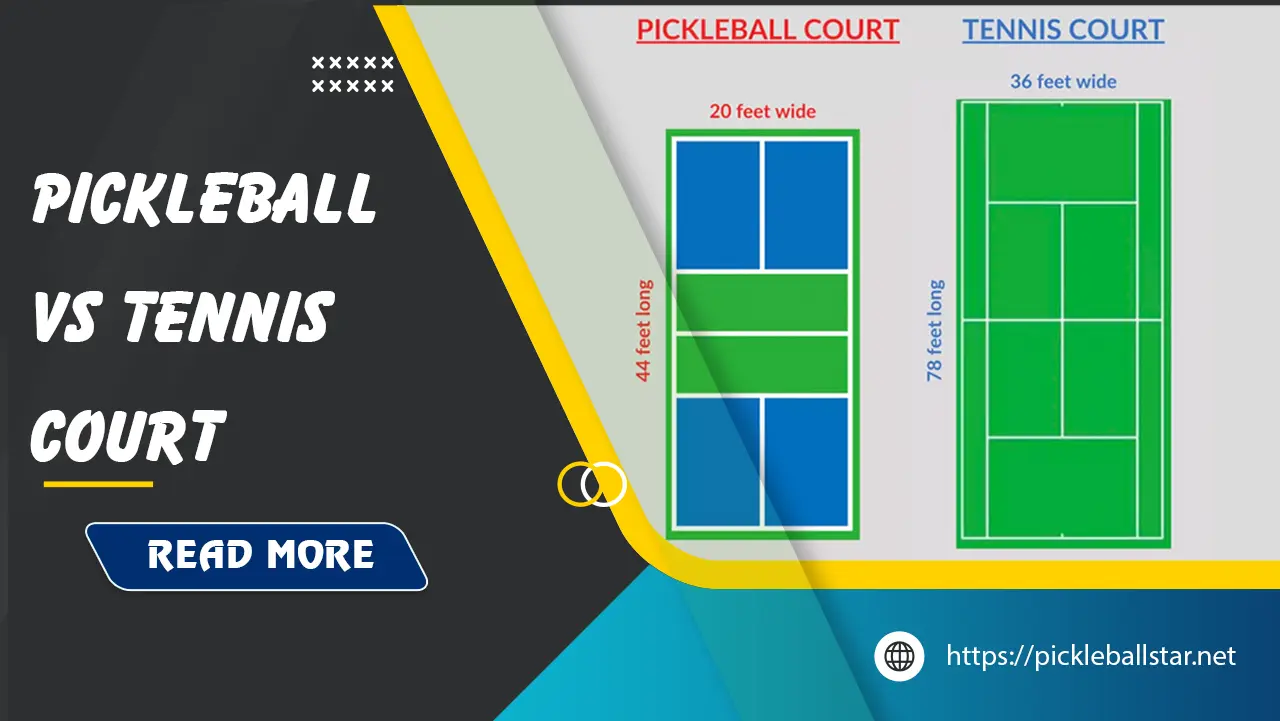
Court dimensions and layout
Pickleball court dimensions
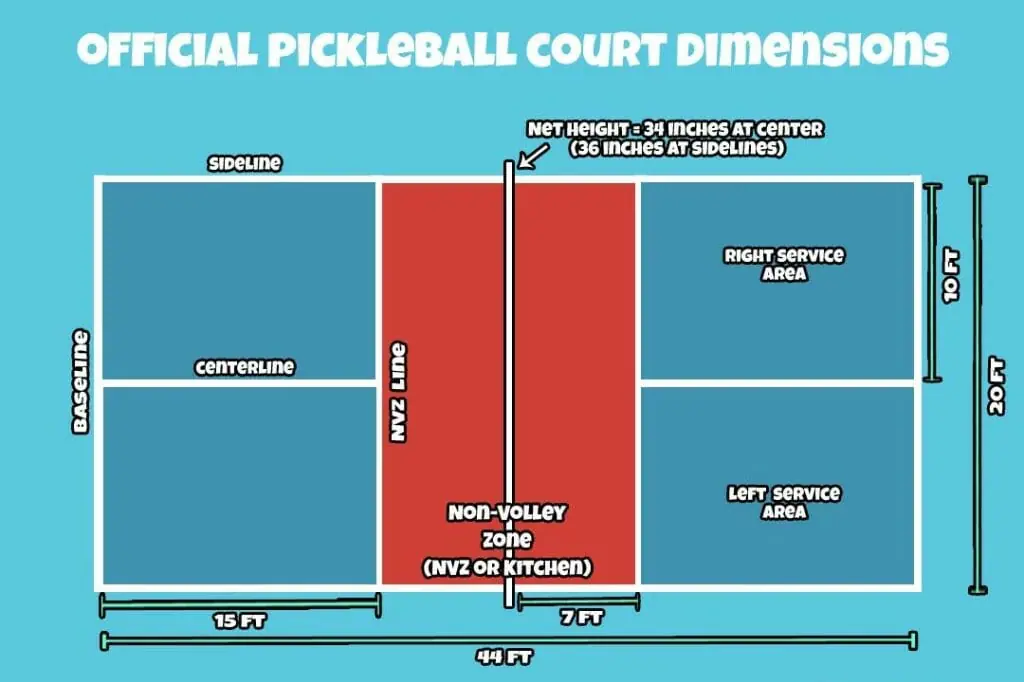
A standard pickleball court measures 20 feet wide by 44 feet long. This compact size contributes to the sport’s fast-paced and accessible nature. The court is divided into two equal halves by a centerline, with each half containing a non-volley zone, also known as the “kitchen,” which extends 7 feet from the net. Behind these non-volley zones are the service areas where players serve the ball. The sidelines and baselines define the boundaries of the court. The net in pickleball stands at 36 inches high at the sidelines and 34 inches high at the center.
Tennis court dimensions
On the other hand, the dimensions of a tennis court vary depending on whether it’s designated for singles or doubles play. For singles, the court measures 27 feet wide by 78 feet long, while for doubles matches, it expands to 36 feet wide but retains the same length. The court is divided into two equal halves by the net, with service boxes and baseline areas clearly marked. The net is 42 inches high at the posts and 36 inches high at the center.
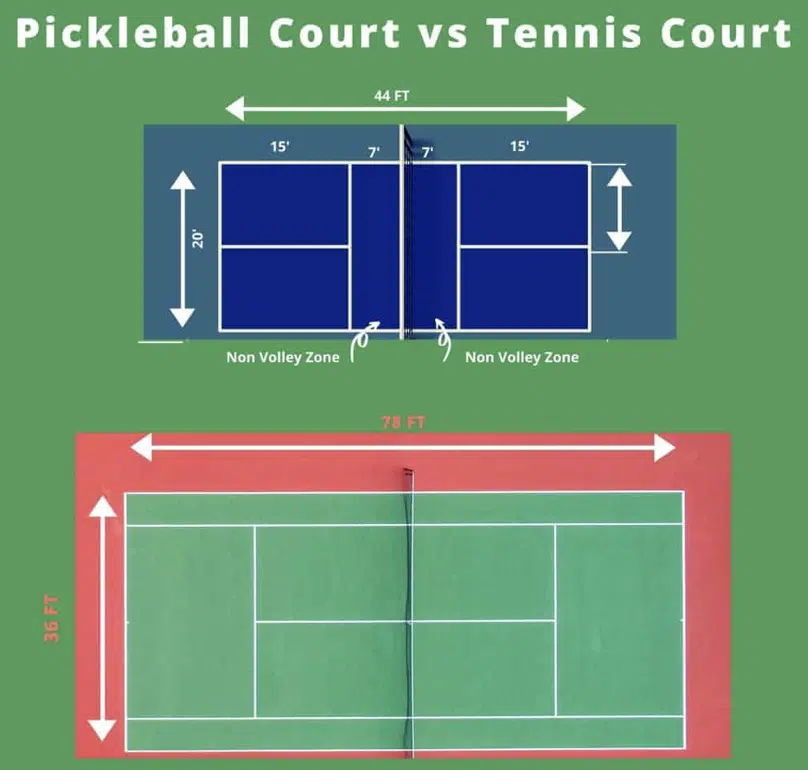
Impact of court size on gameplay
The smaller size of the pickleball court compared to a tennis court has a significant impact on gameplay. Pickleball’s compact court size makes for quicker gameplay and demands faster reflexes. This smaller area encourages intensified rallies and a more immediate, dynamic playing style. Playing on a pickleball court often feels like a rapid game of chess, where players must strategically anticipate their opponent’s moves and react almost instantaneously.
In contrast, a tennis court’s more expansive area requires players to cover more ground. The larger court size promotes longer rallies and a game style that can blend power and finesse. Players must use a variety of strokes and footwork to navigate the larger playing area effectively. Tennis often involves a more demanding physical and technical performance, making it a more arduous but rewarding sport for many.
Surface types

Pickleball court surfaces
Pickleball courts can be constructed using various surface materials, such as concrete, asphalt, or even synthetic materials like rubber and carpeting for indoor play. Concrete and asphalt are the most popular choices for outdoor courts due to their durability and resistance to weather conditions. These surfaces provide a consistent bounce, which is crucial for maintaining the quality of gameplay. Indoor courts using synthetic materials offer better traction and cushioning, improving player safety and comfort during extended play sessions.
Tennis court surfaces
Tennis courts can be constructed from a variety of surfaces, including grass, clay, synthetic materials, and hard courts. The surface type has a substantial impact on the game:
- Grass courts: Characterized by a lower, faster bounce that favors serve-and-volley tactics. These courts are more slippery and demand exceptional footwork and balance.
- Clay courts: Offer a higher, slower bounce that encourages baseline rallies and a more defensive playing style. They are more forgiving, allowing for better slide and recovery.
- Synthetic courts: Can be designed to mimic the characteristics of grass or clay, providing a range of playing experiences.
- Hard courts: Known for their medium-paced, consistent bounce, which supports a balanced game style. These are the most common surfaces for both professional and recreational players.
Impact of surface type on gameplay
The type of surface in both pickleball and tennis courts substantially influences gameplay. A concrete or asphalt pickleball court creates a fast-paced game with a consistent bounce. In contrast, indoor synthetic surfaces offer better grip and cushioning, which can improve player comfort and safety.
In tennis, each surface type brings a different dynamic to the game. Grass courts foster quick points due to the fast and low bounce, requiring players to be agile and fast. Clay courts slow down the game, allowing for longer rallies that test players’ stamina and consistency. Hard courts provide a balanced experience, rewarding both aggressive and defensive play styles.
Net specifications
Pickleball net height
In pickleball, the net stands 36 inches high at the sidelines and 34 inches high at the center. This relatively low net height allows for more aggressive and strategic play close to the net, enabling tactics like “dinking” – softly hitting the ball just over the net into the opponent’s non-volley zone.
Tennis net height
Tennis courts feature nets that are significantly higher. The net stands 42 inches at the posts and 36 inches at the center. This higher net height changes the dynamics of the game, emphasizing strong, powerful strokes and higher ball trajectories.
Impact of net height on gameplay
The difference in net height between pickleball and tennis profoundly affects how each game is played. The lower net in pickleball encourages players to engage in close-net battles and makes executing drop shots easier. These factors lead to quicker and more reactive gameplay. In tennis, the higher net demands more forceful and precise shots to clear it, shifting the focus to baseline rallies and power-based gameplay. The strategic dynamics differ greatly, with tennis requiring more power and endurance, and pickleball rewarding strategic ingenuity and quicker reflexes.
Non-volley zones
Pickleball kitchen no-volley zone
A unique aspect of a pickleball court is the inclusion of non-volley zones, or “kitchens,” which extend 7 feet from the net on each side. Players are not allowed to volley the ball while standing in the kitchen. Instead, they must let it bounce before hitting it.
Tennis court volley zones
In contrast, tennis courts do not have any designated non-volley zones. Players are free to volley the ball anywhere on the court, which allows for a wide variety of play styles, from baseline rallies to aggressive net play.
Impact of no-volley zones on gameplay
The no-volley zone in pickleball adds a unique layer of strategy to the game. Players must be careful about positioning to avoid faulting in the kitchen while maintaining control of the point. This promotes longer rallies and a focus on shot placement and control rather than sheer power.
In tennis, the absence of no-volley zones allows for more aggressive net play but requires greater precision and power to dominate. The ability to volley anywhere on the court broadens the range of tactics available to players, making it a more versatile but demanding sport.
Equipment used
Pickleball paddles
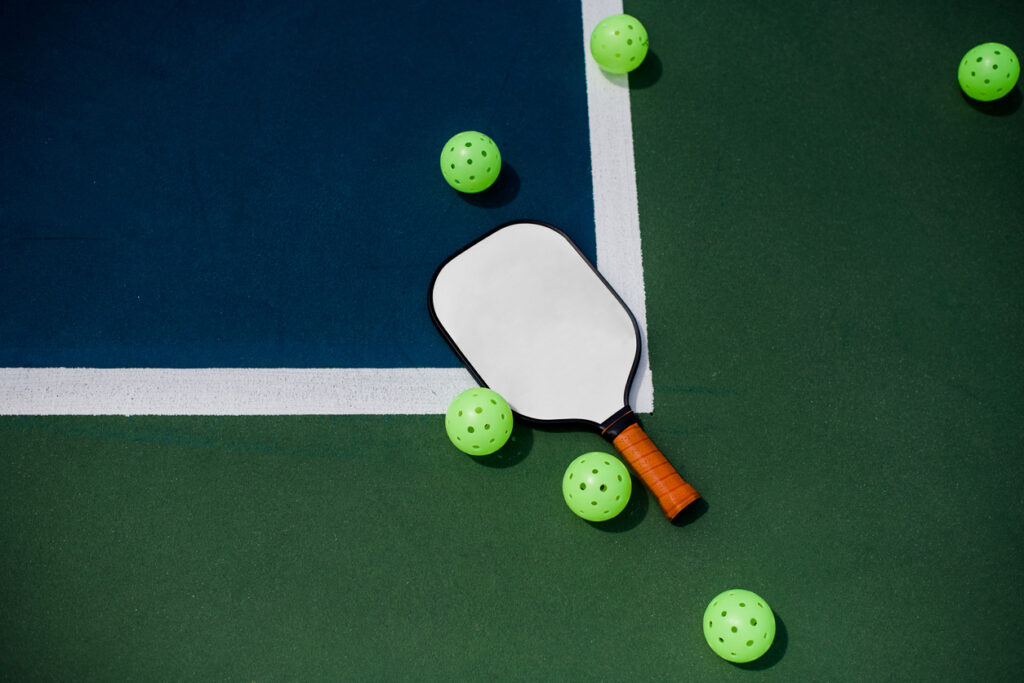
Pickleball paddles are smaller and lighter than tennis rackets, averaging around 7.5 ounces in weight. They are typically made of composite materials like graphite and are solid in the middle, unlike tennis rackets which have strings. The total length of a pickleball paddle must not exceed 24 inches, and the hitting surface cannot exceed 17 inches.
Tennis rackets
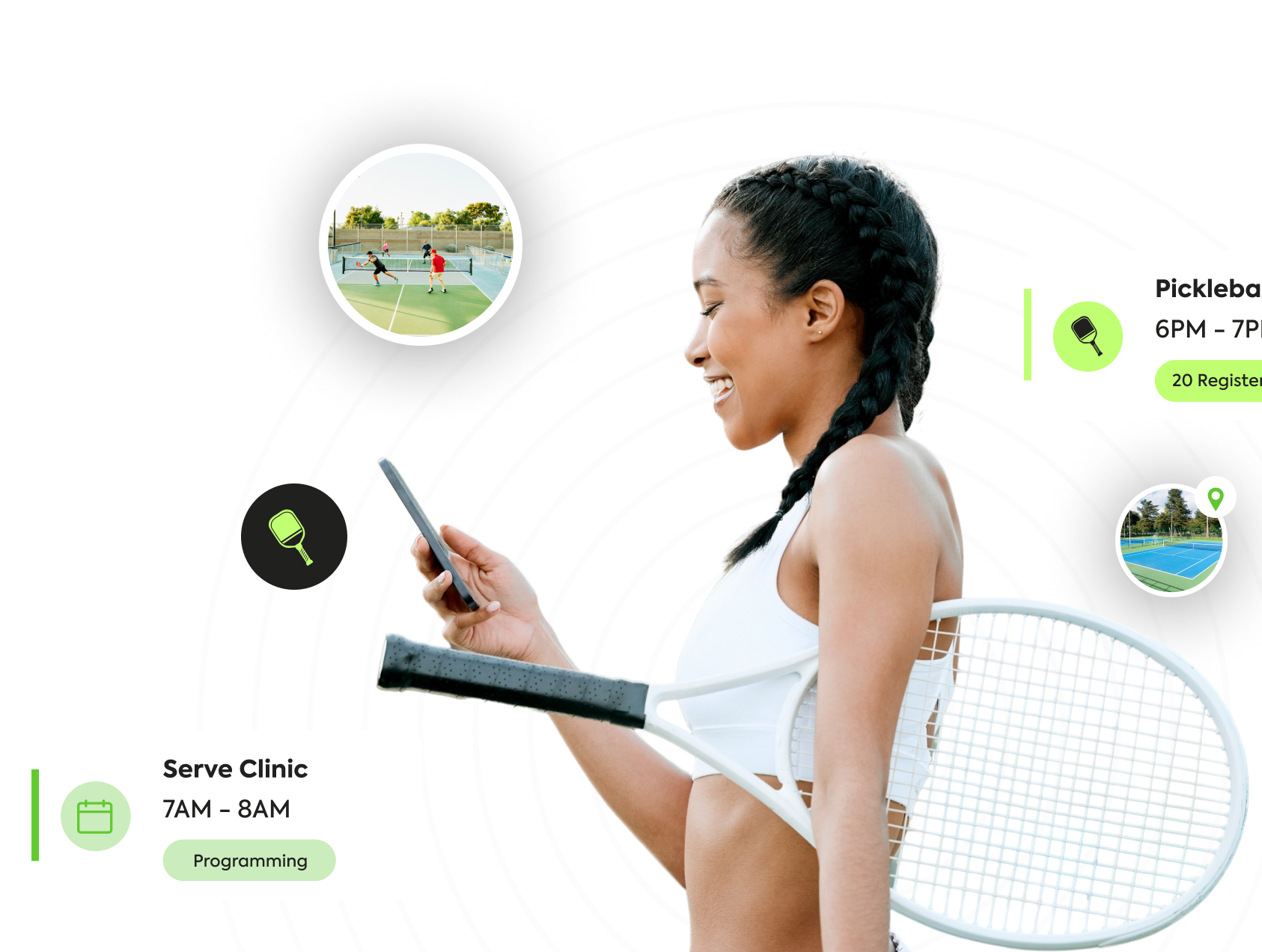
In contrast, tennis rackets are typically larger and heavier, averaging between 10 and 11 ounces. They are known for their strung faces, allowing players to generate more spin on the ball compared to the solid pickleball paddles. The maximum length of a tennis racket is 29 inches, with a maximum stringed area of 15.5 inches in length and 11.5 inches in width.
Pickleball balls
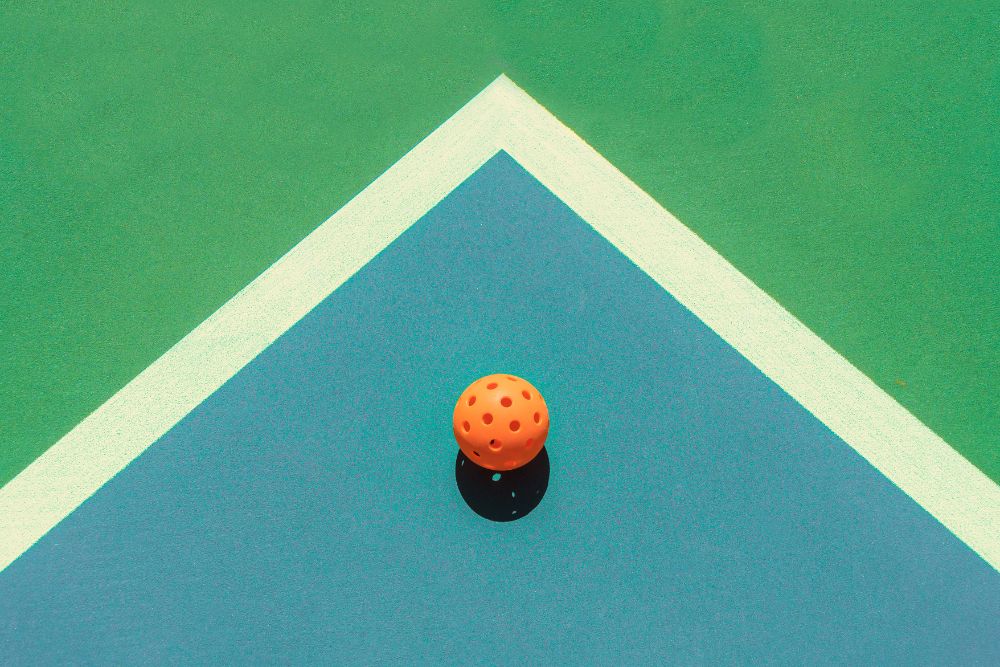
Pickleball balls are made of hard plastic with holes similar to a wiffle ball. They are hollow and lighter than tennis balls, averaging between 0.78 and 0.93 ounces in weight. The diameter is 2.92 inches. Outdoor pickleball balls have smaller holes to perform better in windy conditions.
Tennis balls
Tennis balls are slightly smaller and heavier than pickleball balls. Made from felt-covered rubber, they weigh between 1.98 and 2.1 ounces and have a diameter of up to 2.7 inches. The fluorescent yellow color is standard for official matches, although training balls can come in other colors like red, blue, or orange.
Gameplay style
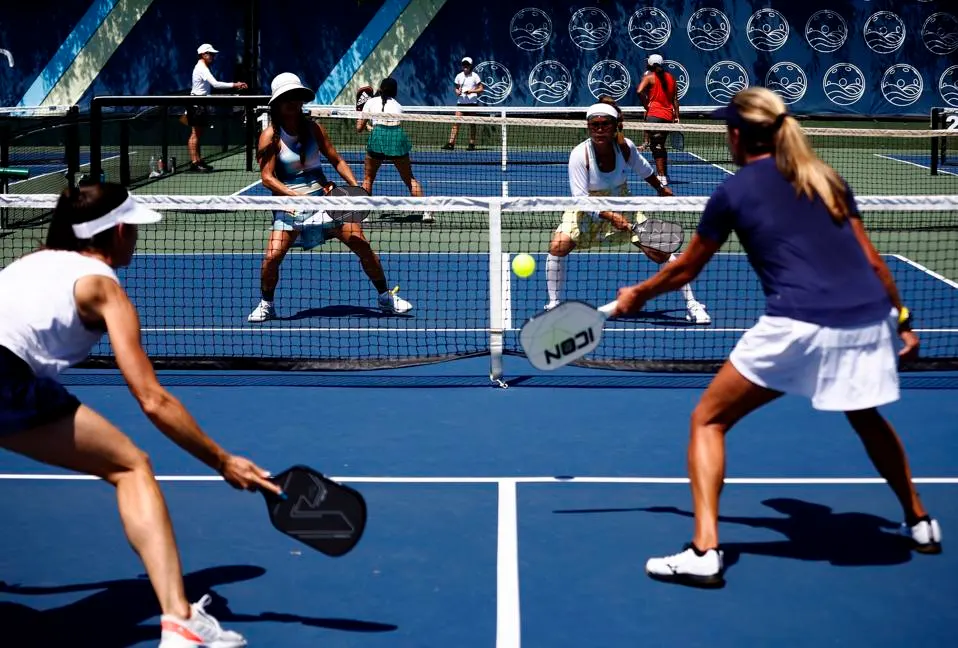
Pickleball gameplay
Pickleball is often described as a blend of badminton, ping pong, and tennis, emphasizing control, precision, and strategic shot placement. Matches feature shorter rallies and a faster pace, requiring quick reflexes and sharp anticipation. The game frequently involves dinking, volleys, and third-shot drops, creating a more engaging and dynamic experience.
Tennis gameplay
Tennis gameplay, on the other hand, emphasizes power, endurance, and technical proficiency. Players engage in long baseline rallies, employing a diverse range of strokes like groundstrokes, volleys, and serves. The larger court area and faster ball speed demand greater athleticism and physical effort, making tennis a more physically strenuous sport. The game rewards players who can master a wide range of techniques and tactical nuances.
Rules and scoring
Pickleball rules
Pickleball uses a rally scoring system where only the serving team can score points. Games are played to 11, 15, or 21 points, with players required to win by 2. The serve must be performed underhand, and the ball must land in the opponent’s diagonal service court. The non-volley zone rule (kitchen) adds an extra strategic element, requiring players to let the ball bounce before hitting it within this area.
Tennis rules
Tennis uses a complex point system, with points advancing in the sequence of 15, 30, 40, and game. A set is won by the first player to win six games with at least a two-game lead. Matches are often best of three or five sets. Players can score points on both their serve and return, and the serve must clear the net and land within the opponent’s service box. There’s no restriction on volleying, distinguishing it significantly from pickleball.
Pickleball scoring
In pickleball, only the serving team can score points. A game is typically played to 11 points, but can also be extended to 15 or 21 points depending on the match format. The winning team must have a two-point lead to secure victory. This scoring system keeps the game competitive and often results in tightly contested matches.
Tennis scoring
Tennis scoring is more layered and can be complex for newcomers. Each game is scored with points (15, 30, 40, and game), and players need to win six games by a margin of two to win a set. In cases where both players win six games each, a tie-breaker game determines the set winner. A match is typically played as the best of three or five sets. This multifaceted scoring system adds to the game’s strategic depth and competitive intensity.
Court adaptability
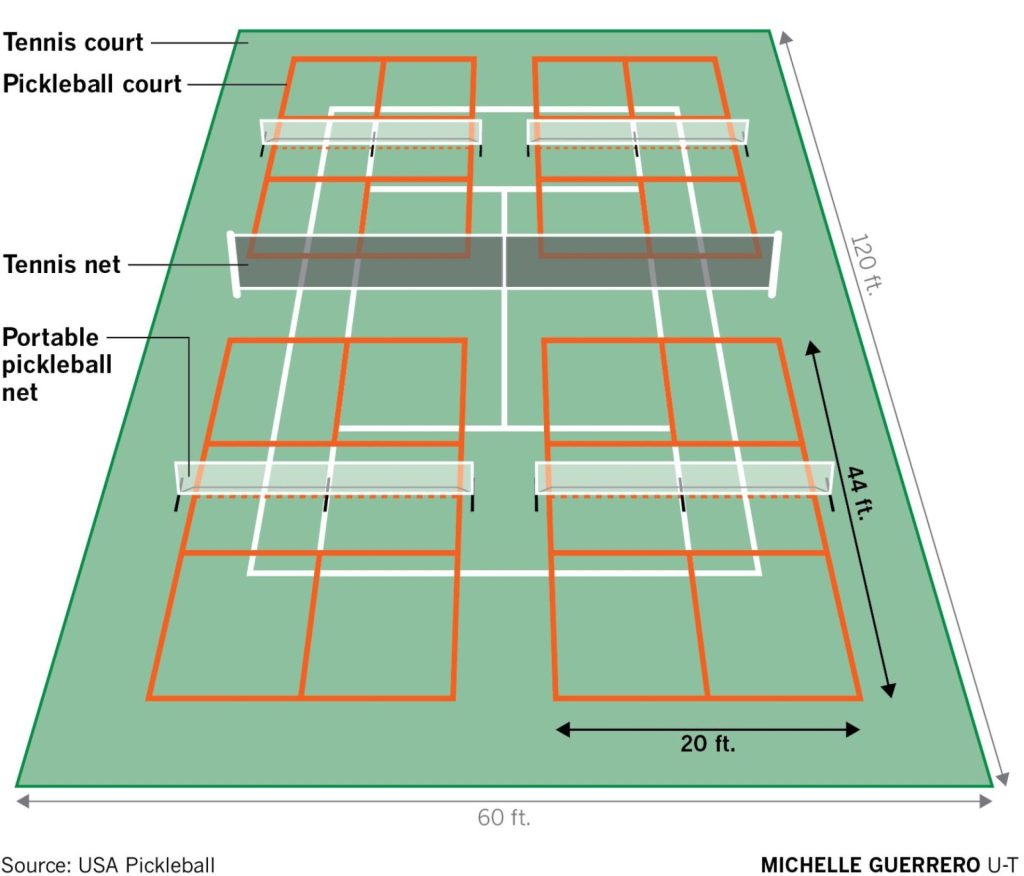
Converting tennis courts for pickleball
One of the practical advantages of pickleball is the ease with which a tennis court can be converted into multiple pickleball courts. Typically, a single tennis court can be transformed to accommodate up to four pickleball courts. This flexibility makes it easier for communities and facilities to offer pickleball without requiring new construction. The process involves adding pickleball-specific lines and adjusting the net height.
Limitations of court conversion
However, converting a tennis court to a pickleball court does come with some limitations. The dimensions and existing net height of the tennis court may not provide the most authentic pickleball experience. Tennis courts are much larger, which can make them feel overly spacious for pickleball players, especially beginners. Additionally, the higher net in tennis might not provide the same dynamic gameplay as a standard pickleball net.
Flexibility of pickleball court setup
One of the standout features of pickleball is the flexibility in its court setup. The compact size allows it to be easily set up in various locations, from traditional sports courts to gymnasiums and even driveways. This adaptability has been a key factor in pickleball’s rapid growth, making it accessible to players of all skill levels and backgrounds.
Social atmosphere
Pickleball social scene
The social atmosphere around pickleball courts is markedly friendly and inclusive. It’s not uncommon to see family gatherings, intergenerational play, and a lot of casual interaction between players. The sport has cultivated a community-oriented culture that often includes social events and casual play sessions. Pickleball’s accessibility and ease of learning make it a favorite for social players looking to combine exercise with social interaction.
Tennis social scene
Tennis, while also social, often carries a more formal and competitive atmosphere. Tennis courts are typically quieter, with an emphasis on proper etiquette and sportsmanship. The competitive nature of matches can be an appealing aspect for players who enjoy structured competition and athletic excellence. Tennis clubs and facilities often foster a sense of community, but the social interactions are generally more formal compared to pickleball.
Final recommendations
Assessing your needs
Deciding between a pickleball court and a tennis court ultimately depends on your individual needs and preferences. Consider your level of competitiveness, desired social atmosphere, and the resources available for construction and maintenance. If you enjoy fast-paced, strategic play and a social, laid-back environment, pickleball might be the better choice. On the other hand, if you prefer a more athletic, technically demanding sport with a formal competitive structure, tennis could be more suitable.
Top tips for making your decision
- Determine emotional attachments: Consider any past experiences that may influence your preference.
- Listen to your three brains: Use your head for reason, your heart for passion, and your gut for courage.
- Analyze the cost of indecision: Evaluate potential downsides of not making a decision.
- Consider stakeholder perspectives: Think about what others who share your playing space might prefer.
- Apply the “Rule of Ten:” Evaluate how you’ll feel about the decision in 10 days, 10 months, and 10 years.
- Designate an antagonist: Have someone play devil’s advocate to scrutinize your decision.
- Clarify your goals: Remind yourself of what you aim to achieve and avoid overthinking.
Ultimately, the right decision aligns with your playing style, social preferences, and logistical considerations.
Frequently asked questions
Can you play tennis on a pickleball court?
Yes! You can play tennis on a pickleball court, but it’s not ideal due to the smaller dimensions and lower net height. The court size may feel restrictive for tennis players, and the lowered net could impact the quality of gameplay.
How to play pickleball on a tennis court
To play pickleball on a tennis court, you need to mark off a smaller rectangular area within the tennis court’s dimensions (20 feet by 44 feet). You can use temporary lines or chalk to signify the pickleball court boundaries. Adjust the net height to 34 inches at the center and 36 inches at the posts to mimic a standard pickleball net. This setup allows you to convert a tennis court into a pickleball court quickly and easily.
What is the size of a standard pickleball court?
A standard pickleball court measures 20 feet wide by 44 feet long. This size allows for a fast-paced and accessible game, regardless of players’ skill levels.
What is the standard tennis court size?
A standard tennis court is 78 feet long. For singles matches, the court’s width is 27 feet, while for doubles, it expands to 36 feet. This larger playing area supports a wide range of athletic and tactical moves.
What type of surface is best for pickleball courts?
The best surfaces for pickleball courts are concrete and asphalt due to their durability and consistent bounce. Indoor courts often use synthetic surfaces like rubber or carpeting for improved traction and cushioning. These surfaces provide reliable performance and minimal maintenance, making them ideal for regular play.
In summary, both pickleball and tennis offer unique playing experiences with distinct court dimensions, surface types, and social environments. Whether you lean towards the strategic, social nature of pickleball or the athletic and formal atmosphere of tennis, understanding these differences helps you make the best choice for your needs and preferences.
